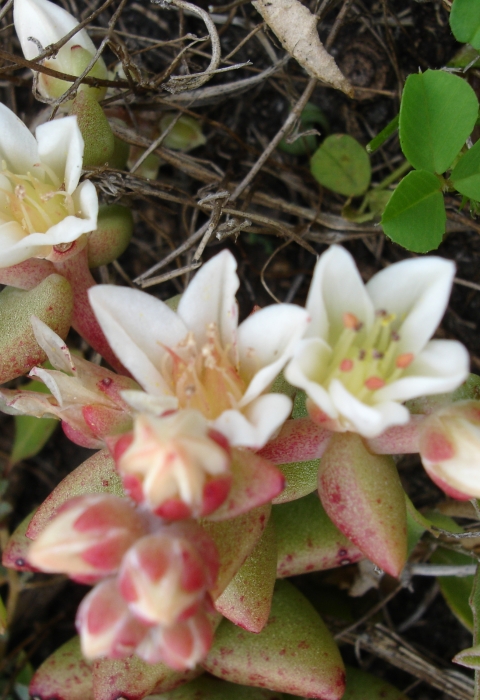Ventura, Calif. - Two plants that live on California’s Channel Islands and nowhere else on earth – the Santa Cruz Island dudleya and island bedstraw – have reached recovery thanks to Endangered Species Act (ESA) protections. The U.S. Fish and Wildlife Service (Service) is proposing to remove the two island plants from the Federal List of Endangered and Threatened Plants.
“The recovery of these island plants is the result of long-term cooperation and conservation efforts by scientists and land managers,” said Paul Souza, director of the U.S. Fish and Wildlife Service’s Pacific Southwest Region. “That’s what the ESA can bring to the table – attention, resources, and incentive for sustained conservation work that produces meaningful results.”
Scientists say their understanding of the plants’ ecology, habitat needs, and status has improved due to the diligent efforts of the U.S. Geological Survey, The Nature Conservancy, National Park Service, and Santa Barbara Botanic Garden to survey, study, and conserve habitat on Santa Cruz Island and San Miguel Island.
“Plants are key contributors to the overall food web and island ecosystem,” said Kenneth Niessen, Service botanist. “As the cause of their decline, and now as their caretakers, we have a responsibility to ensure they, and the benefits they provide to their ecosystem, are not lost to extinction.”
In 1997, the Service determined 13 plants on California’s northern Channel Islands needed ESA protections as a result of decades of habitat loss and alteration due to sheep grazing and soil loss caused by rooting of non-native feral pigs. By 2000, sheep grazing ended, and by 2006, all non-native feral pigs were removed from the islands. In 2000, the Service worked with botanists and land managers to develop a recovery plan to guide recovery efforts for the imperiled plants.
Island bedstraw (Galium buxifolium) is a long-lived woody shrub with small flowers that lives on coastal bluffs, steep rocky slopes, sea-cliffs, and occasionally pine forests, on Santa Cruz and San Miguel islands. At the time of listing, population estimates were in the hundreds. Helicopter surveys from 2017 estimate more than 15,000 individual plants now occur on the islands.
The Santa Cruz Island dudleya (Dudleya nesiotica) is a flowering succulent perennial that lives on Santa Cruz Island. Scientists say the population has remained relatively stable over the last 25 years, with current estimates around 120,000 individuals.
Post-delisting monitoring plans have been developed to monitor the plants’ status to ensure the species’ populations will remain secure.
The Service will accept comments under docket no. FWS-R8-ES-2022-0066 on the proposed rule and post-delisting monitoring plans during a 60-day comment period from December 1, 2022 to January 30, 2023.
Working with others is essential to protecting ecosystems that benefit society as a whole. The Service regularly engages conservation partners, the public, landowners, government agencies, and other stakeholders in our ongoing effort to identify innovative strategies for conserving and recovering protected wildlife, plants, and their habitats.
The ESA is one of the strongest laws of any nation for preventing species extinction. Enacted in 1973 to protect plants and animals threatened with extinction, the ESA has been extraordinarily effective in preventing extinctions and moving species toward recovery, and has spurred unprecedented voluntary conservation across the nation. In a scientific study published in 2019, estimates show that the ESA has prevented the extinction of roughly 291 species since its passage, and more than 99% of listed species.
Established in 1987, the U.S. Fish and Wildlife Service’s Ventura field office works to conserve and protect threatened and endangered fish, wildlife and plants across the southern and central California coast, collaborating with communities and conservation partners to build a future that supports both people and our unique and diverse natural landscapes. To stay up-to-date on the conservation work of our staff like us on Facebook.



